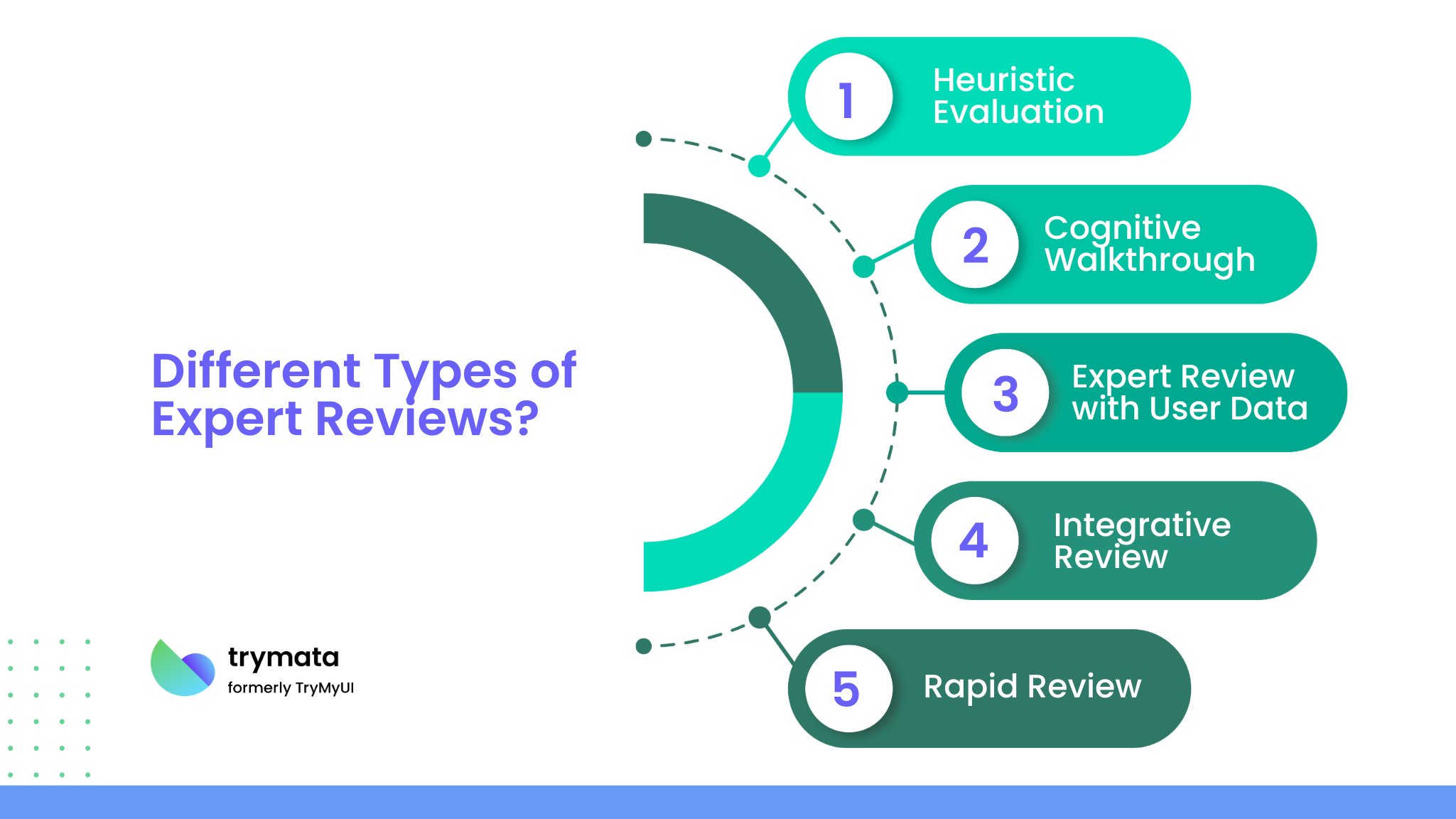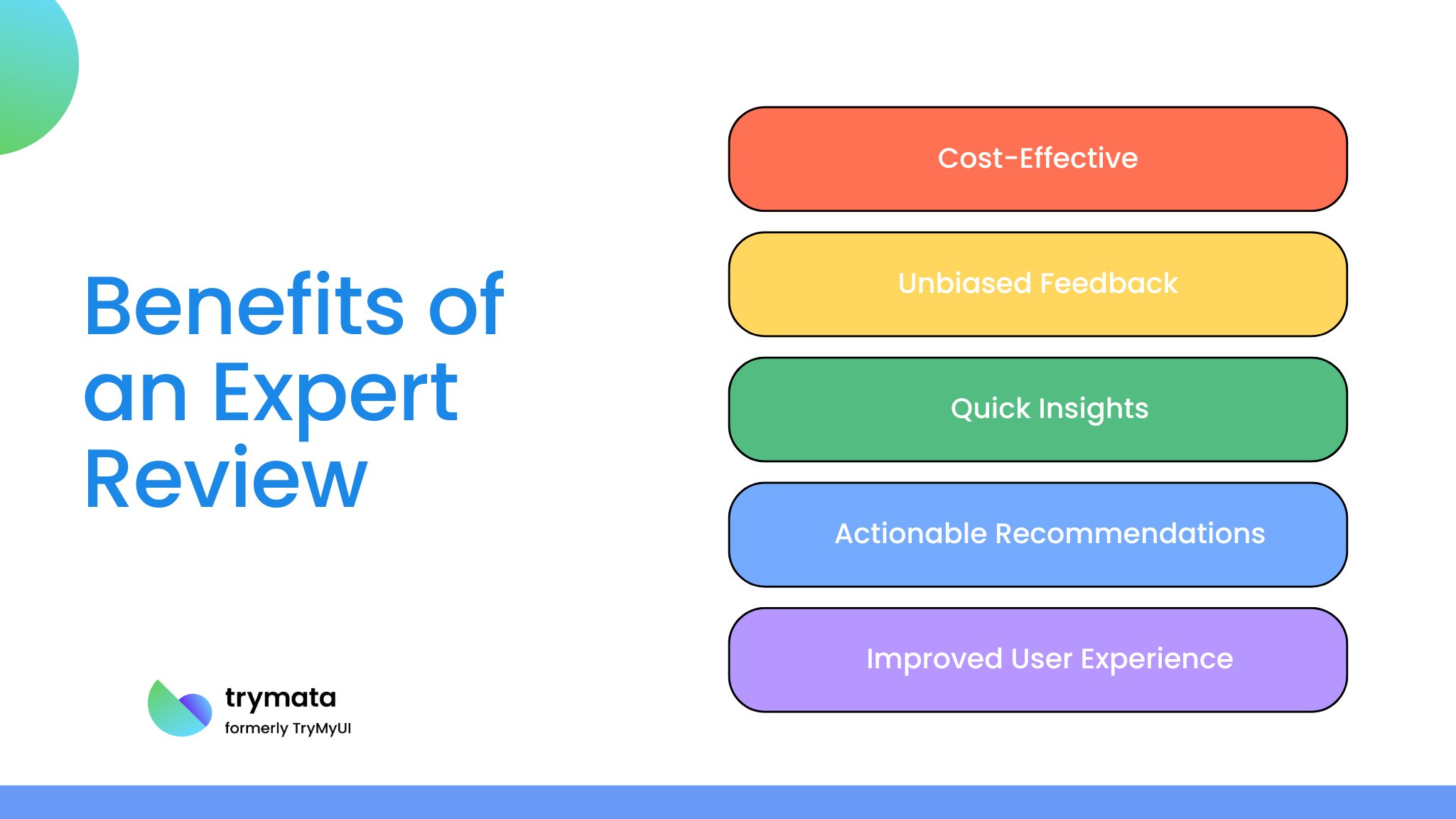In the world of UX design and usability testing, expert review is vital in enhancing product quality and user satisfaction. Unlike user testing, which directly involves end-users, expert reviews are conducted by seasoned professionals who apply established usability principles to evaluate a product’s interface.
These reviews provide invaluable insights into potential usability issues, offering actionable recommendations that can be implemented early in the design process.
Whether in the initial stages of development, pre-launch, or post-launch, expert reviews help identify areas for improvement, streamline design, and ensure that a product aligns with the needs and expectations of its target audience.
In this blog, we will explore how expert reviews improve usability testing and UX design, the various methods involved, and the significant benefits they bring.
What is an Expert Review?
An expert review in usability testing is a systematic evaluation of a product, system, or interface by a usability expert. This process involves critically appraising relevant research, identifying usability issues, and suggesting improvements to enhance user experience (UX).
A human resource development review is essential for assessing the effectiveness of training programs and identifying areas where employee skills can be further enhanced to align with organizational goals. It often combines heuristic evaluation, empirical methods, and fresh perspectives to uncover usability issues and improve functionality.
Unlike user testing, which involves direct input from end-users, expert reviews rely on the expertise of a UX expert to identify areas of improvement based on established usability principles, relevant research, and domain-specific knowledge. The process traditionally brings actionable insights, ensuring the product or system meets the needs of its target audience and functions properly.
Characteristics of Expert Reviews:
- Independent evaluation: Conducted by experts not part of the product’s development team.
- Systematic and explicit methods: Based on usability heuristics and guidelines.
- Rapid review: Often performed quickly to provide immediate feedback.
- Usable document: Delivers actionable recommendations.
When Should You Conduct an Expert Review?
Conducting an expert review is beneficial at various stages of product development. Here are specific scenarios where an expert review proves valuable:
- Early Development Stages: To identify areas of improvement in preliminary designs or wireframes, ensuring usability issues are addressed before moving forward.
- Pre-Launch Testing: To critically appraise the product and ensure it functions properly for the intended audience.
- Post-Launch Evaluation: Iterative changes based on findings should be recommended as part of a systematic review to assess the product’s performance and user interface.
- Standalone Project: As an independent evaluation, when no time or resources are available for user testing.
Different Types of Expert Reviews?
There are several expert reviews, each with a specific focus and methodology. The most common types include:

1. Heuristic Evaluation
One of the most popular methods, heuristic evaluation, involves assessing the product against a set of recognized usability heuristics (such as Nielsen’s heuristics). Experts systematically go through the interface and identify usability violations. Heuristic evaluation is handy in uncovering usability issues early in the design.
2. Cognitive Walkthrough
In a cognitive walkthrough, the expert simulates the user journey to evaluate how easy it is for users to achieve their goals. The expert focuses on the ease of task completion from the user’s perspective, analyzing how intuitive the interface is for a first-time user.
3. Expert Review with User Data
Some expert reviews incorporate empirical methods, where experts analyze data collected from previous user testing or analytics. This comprehensive review combines expert insight with real-world user behavior, providing a complete understanding of usability issues.
4. Integrative Review
An integrative review critiques multiple relevant research sources and systematic reviews to synthesize findings. This approach is used when the product or service being reviewed has a broader application, such as in health services research or social interventions.
5. Rapid Review
A rapid review focuses on providing quick insights, often in response to urgent design or usability concerns. This type of expert review is fast-paced and typically uses explicit methods to generate findings quickly, which are then used to inform design decisions.
How to Conduct an Expert Review?
Conducting an expert review involves several steps to ensure the evaluation is thorough, effective, and provides actionable insights. Here is a breakdown of how to conduct an expert review:
Select the Right Experts
Choose expert reviewers who have experience with usability testing and are familiar with the target audience. Their expertise should align with the product’s purpose. For example, a product aimed at policymakers would benefit from experts familiar with social research methodology or evidence-based healthcare.
Set Evaluation Criteria
Define the key concepts and usability heuristics the experts will focus on. Common criteria include consistency, task flow, error prevention, and overall user satisfaction. To assess design quality effectively, experts should be familiar with the research methodology behind usability principles.
Provide Context and Background
Experts need sufficient context to evaluate the product properly. This could include the target audience, specific use cases, and any research gaps the review should address. A thorough understanding of the product’s goals ensures the review is focused and relevant.
Conduct the Review
Experts will go through the product independently, identifying potential usability issues and making recommendations for improvement. This step may involve using systematic reviews or heuristic evaluation principles to guide the review process.
Document Findings and Recommendations
After the review, experts should document their findings in a reliable systematic review format. This documentation should include identified issues, their severity, and suggested solutions. The final report should provide clear, actionable insights that design teams can implement.
Collaborate with Stakeholders
After completing the review, it’s essential to collaborate with the development team and other stakeholders. Experts should present their findings in a way that answers key questions and supports design decisions.
How Do Expert Reviews Affect UX?
Expert reviews have a profound impact on UX design. They provide valuable feedback from professionals with deep knowledge of usability principles. Here’s how expert reviews influence UX:
- Identifying Key Usability Issues: Experts help identify areas where users may struggle. These insights often reveal minor issues that can significantly improve user satisfaction when addressed early in the design process.
- Improving Task Flows: Expert reviews ensure that tasks within the product are intuitive and easy to navigate. When experts identify usability issues, they suggest improvements to task flow that enhance overall usability.
- Providing Actionable Recommendations: The insights from expert reviews are often explicit methods that can be directly applied to design changes. This improves the product’s ability to meet user needs and aligns the interface with usability best practices.
- Streamlining Development: By conducting an expert review early in the process, teams can quickly resolve design issues, saving time in later stages. This leads to a more efficient development process with fewer revisions.
Benefits of an Expert Review
There are numerous benefits to conducting expert reviews as part of the usability testing process. Some of the key advantages include:

- Cost-Effective: Expert reviews are less expensive and quicker to conduct than user testing, making them a cost-effective way to identify usability issues early in development.
- Unbiased Feedback: Because independent evaluators conduct expert reviews, their feedback is often more objective and unbiased than internal reviews by team members who may have been involved in the design process.
- Quick Insights: Expert reviews provide fast insights into usability problems, allowing for rapid changes before launching a product or feature.
- Actionable Recommendations: Experts provide actionable recommendations that can be directly applied to improve the product’s design and functionality, making it more intuitive for users.
- Improved User Experience: Expert reviews improve user experience by identifying minor issues and improving usability, which can increase user satisfaction and engagement.
Conclusion
Expert reviews are a cornerstone of usability testing, providing a critical overview of usability and functionality. By leveraging systematic reviews, heuristic evaluation, and scoping review maps, expert reviewers identify areas of improvement and recommend actionable changes.
Whether conducted as a standalone project or part of a broader usability strategy, expert reviews embrace multiple methods to ensure that products are intuitive, functional, and aligned with user needs.
From health services research to digital applications, expert reviews explain social interventions, identify relevant research gaps, and recommend new frameworks for improvement. They are a reliable, cost-effective tool for ensuring usability, enhancing user satisfaction, and properly delivering interfaces.
Expert reviews are indispensable for usability testing and UX design because they combine expertise, systematic methods, and fresh perspectives.




